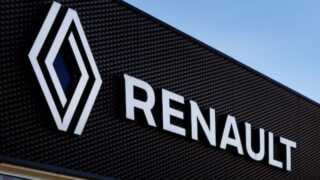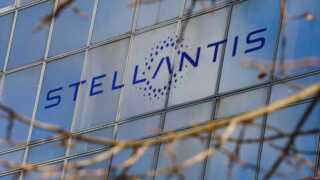Follow us today…
The race to deploy autonomous vehicles at scale has a powerful new contender, and it’s not a single company but a strategic alliance. In a move that redefines the competitive landscape, Uber has announced a partnership with EV-maker Lucid and autonomous technology firm Nuro to deploy a fleet of at least 20,000 self-driving Lucid Gravity SUVs on its ride-hailing platform. This collaboration isn’t just another pilot program; it’s a full-throated challenge to the vertically integrated models of Tesla and the methodical, self-contained approach of Waymo. By assembling a “best-of-breed” team, Uber is making a calculated bet that the fastest path to autonomous dominance is not by building everything yourself, but by mastering the platform and partnering with the best specialists in their fields.
The Power of the Platform vs. The Vertical Stack
The Uber-Lucid-Nuro strategy stands in stark contrast to its main rivals. Tesla is famously pursuing a go-it-alone strategy, developing its own vehicles, AI, and a closed robotaxi network. Waymo (owned by Alphabet) develops its world-class autonomous driver but has historically integrated it into vehicles from partners like Jaguar and, more recently, Zeekr.
Uber’s approach is different and arguably more robust. It leverages the unique strengths of each partner:
This model allows Uber to avoid the immense capital expenditure of vehicle R&D and manufacturing, focusing instead on what it does best: connecting riders with rides. It’s a platform play that makes Uber a potential winner regardless of which specific autonomous technology ultimately proves superior, as it already partners with Waymo and others.
The Inevitable Transition for Human Drivers
The deployment of 20,000 autonomous vehicles raises an immediate and sensitive question: what happens to the millions of human drivers who are the backbone of Uber’s current business? The transition will not be instantaneous. For years, cities will operate on a hybrid model, with human drivers filling the gaps where autonomous vehicles are not yet approved or cannot operate, such as in severe weather.
However, the long-term trend is clear: a shift away from human-driven ride-hailing. This will undoubtedly lead to job displacement. Yet, it will also create new roles. As ARK Invest has pointed out, automation historically creates new job categories. The robotaxi economy will require a massive workforce of remote operators (to assist vehicles in tricky situations), maintenance technicians, fleet managers, and cleaning crews. The nature of the work will change, shifting from driving to supporting and managing an autonomous network. The societal challenge will be ensuring a just transition for the drivers affected by this technological sea change.
Remaking the Urban Landscape
Advertising
The widespread availability of cheap, convenient robotaxis could fundamentally alter our relationship with the automobile. If hailing an autonomous vehicle is more affordable and efficient than owning, insuring, and parking a personal car, many urban dwellers may forgo car ownership altogether. This could free up vast amounts of land currently dedicated to parking, opening new possibilities for housing, parks, and public spaces.
However, the impact on traffic is more complex. While a reduction in private car ownership could ease congestion, the rise of “zombie miles”—empty robotaxis traveling to pick up their next fare or repositioning themselves—could potentially make traffic worse. As McKinsey & Company highlights, successfully managing these fleets will be critical to realizing the benefits of autonomy. Cities like New York and Los Angeles will become crucial test cases for whether robotaxis lead to urban utopia or gridlocked dystopia.
The Financial Horse Race
This strategic move comes at a time of diverging financial fortunes for the key players. Tesla, while immensely profitable, has recently faced declining revenues and intense competition. Lucid, on the other hand, is still in its high-growth, pre-profitability phase, but is seeing deliveries rise significantly. Uber’s $300 million investment in Lucid as part of this deal is a massive vote of confidence and a vital cash infusion.
So, who wins the robotaxi race?
- Tesla is the high-risk, high-reward bet on solving full autonomy with cameras alone. If it succeeds, its integrated model could be incredibly profitable.
- Waymo is the cautious, proven leader, prioritizing safety and methodical expansion. Its path is slower but more certain.
- Uber is the savvy platform aggregator. By partnering with the best tech, it doesn’t need to win the technology race outright; it just needs to be the platform where the winners operate. As analysts at MarketBeat suggest, this makes Uber a compelling bet on the entire sector’s growth.
Wrapping up
Uber’s alliance with Lucid and Nuro is more than just a fleet deal; it’s a masterclass in strategic positioning. By choosing collaboration over vertical integration, Uber is leveraging its core strengths as a network orchestrator while mitigating the immense risks and costs of developing autonomous hardware and software from scratch. This move solidifies its position at the center of the future of mobility, transforming it from a company that connects drivers to riders into a platform that connects riders to autonomous fleets. While the road ahead involves complex challenges, from managing the transition for human drivers to reshaping urban traffic, Uber has positioned itself not just to survive the autonomous revolution, but to lead it.
Disclosure: Image rendered by Midjourney
Rob Enderle is a technology analyst at Torque News who covers automotive technology and battery developments. You can learn more about Rob on Wikipedia and follow his articles on Forbes, X, and LinkedIn.
Follow us today…
Source: torquenews.com










